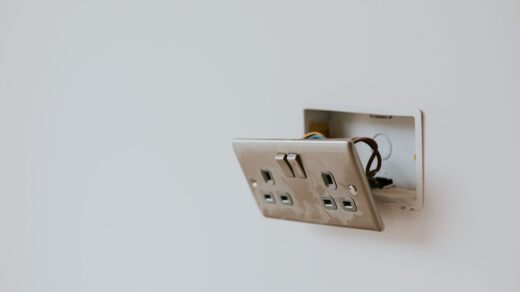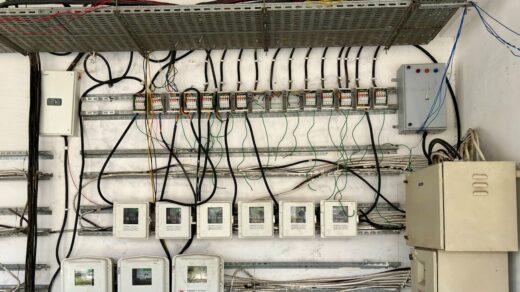An electrical short, also termed a short circuit, occurs when electricity takes a path it shouldn’t, often resulting in circuit interruptions or even potential fire hazards. Determining the source of the short is essential for safety and maintaining the health of your electrical system.
Recognizing the Signs of an Electrical Short
- Frequent Circuit Breaker Trips: If your circuit breaker frequently trips, it’s a strong indication of a short;
- Burning Smells: A distinct odor, similar to that of burning plastic, often originates from short wires;
- Discolored Outlets: Brownish or black marks around outlets may indicate a short nearby;
- Flickering Lights: While this can also be a sign of other issues, it’s often linked to shorts.
Primary Causes of Electrical Shorts
- Aged Wiring: Old homes may have outdated wiring, more prone to wear and tear;
- Faulty Appliances or Outlets: Sometimes, the device you plug in or the outlet itself can be the culprit;
- External Factors: Rodents, water leaks, and DIY mishaps can damage wiring, leading to shorts.
Tools and Equipment Required
- Multimeter: Essential for measuring voltage and resistance;
- Circuit Breaker Finder: Helps locate the appropriate breaker for each circuit;
- Insulated Pliers and Screwdrivers: Necessary for safe handling.
Step-by-Step Guide to Finding the Short
- Power Down: Turn off all devices connected to the affected circuit;
- Reset the Breaker: If it trips immediately, you have a direct short. If not, it might be an overload;
- Isolate and Test: Disconnect devices one by one, and use a multimeter to test each one;
- Check Wiring: Visually inspect wiring for obvious signs of damage;
- Probe with Multimeter: For hidden issues, test each segment of wiring for unexpected resistance or voltage.
Comparison: Circuit Breakers vs. Fuses
| Feature | Circuit Breakers | Fuses |
|---|---|---|
| Lifespan | Can be reset multiple times | One-time use; needs replacement |
| Cost | Initially more, but cost-effective in the long run | Cheaper initially, but recurrent costs |
| Protection Level | Advanced models offer more layered protection | Basic overcurrent protection |
| Response Time | Generally faster | Depends on the type and rating |
Safety Precautions
- Never Touch Exposed Wiring: Always use insulated tools;
- Turn Off Main Power: When in doubt, it’s safer to work with the main power off;
- Avoid Working in Wet Conditions: Water is a conductor; ensure your workspace is dry;
- Seek Professional Help if Unsure: If you can’t find the short or feel uncertain, consult an electrician.
Video Guide
If you still have questions, we suggest you watch the video we have prepared for you. Enjoy watching it!
The Science Behind Electrical Shorts
Every electrical circuit has a defined path for the current to flow. An electrical short happens when an unintended path forms, allowing electricity to bypass its usual route. This can result in a surge of electricity, potentially causing fires or damaging appliances. The danger isn’t just theoretical; according to the Electrical Safety Foundation International, home electrical fires account for an estimated 51,000 fires each year.

The Long-Term Implications of Ignored Shorts
Electrical shorts, when ignored, can have a series of repercussions. First and foremost, they pose a fire risk. But that’s not all; they can also lead to the degradation of your home’s electrical infrastructure. Over time, this can lead to more frequent electrical issues, from flickering lights to major system failures. Moreover, frequent shorts can damage connected appliances, reducing their lifespan and efficiency. The economic implications of neglecting electrical shorts, in the form of repairs and replacements, can be considerable over time.
Modern Solutions and Innovations
In today’s era, technology is constantly evolving, and so are solutions to electrical challenges. Smart circuit breakers, for instance, are designed to provide real-time monitoring of your home’s electrical system. They can detect abnormalities, including shorts, and notify homeowners instantly via smartphone apps. Additionally, innovations like ground fault circuit interrupters (GFCIs) and arc-fault circuit interrupters (AFCIs) are designed to protect against specific types of dangerous electrical scenarios, offering an added layer of security.
Conclusion
Identifying and rectifying an electrical short ensures the safety of both your home and its residents. While the process can sometimes be time-consuming, understanding how to methodically locate and address the issue is crucial. Equipped with the right tools and knowledge, you can confidently approach the task. However, always prioritize safety, and when in doubt, lean on the expertise of professionals.








